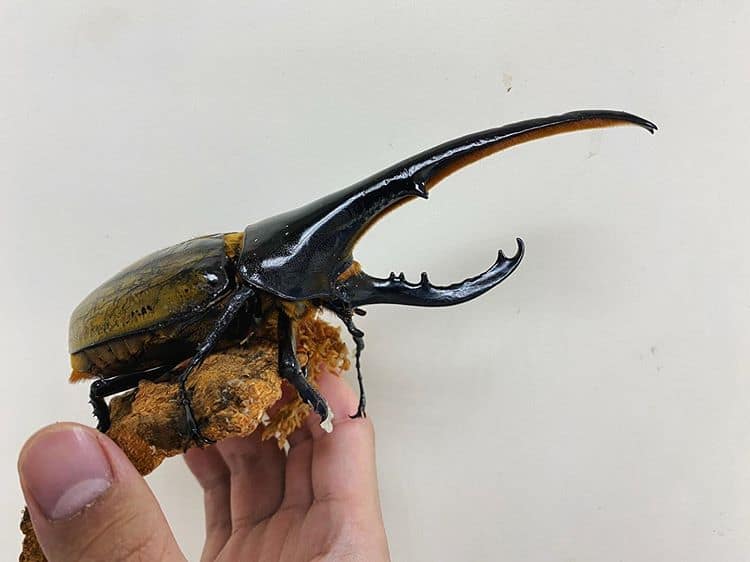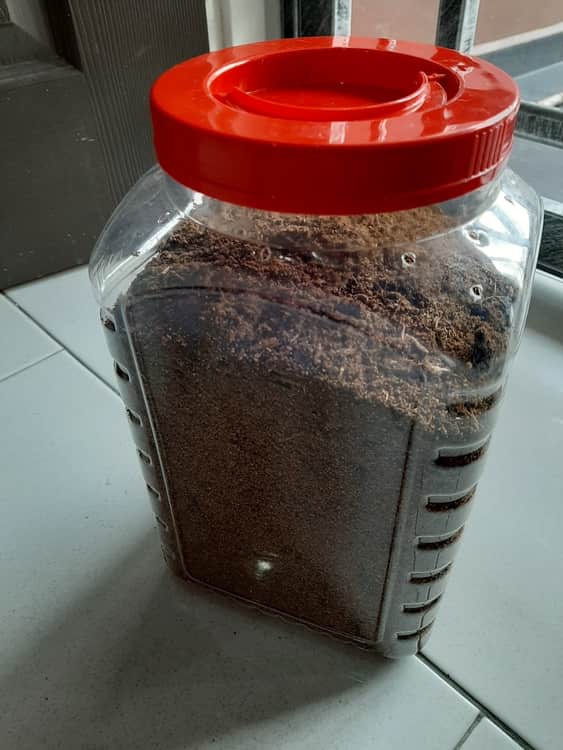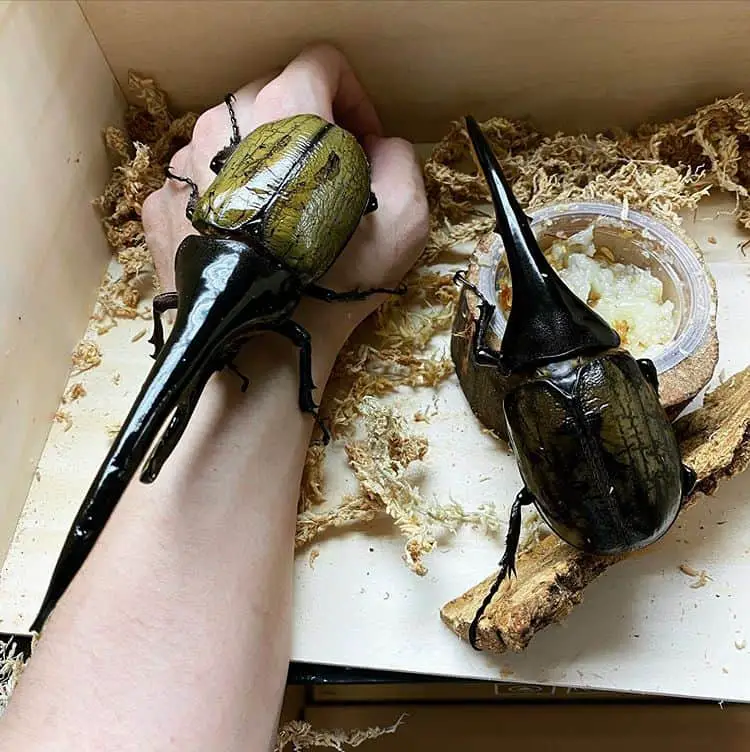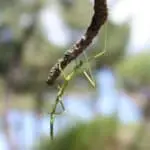What if I told you there’s an insect that’s part tank, part showstopper, and pure charm? Meet the Hercules beetle (Dynastes hercules), a dream pet for beetle enthusiasts. These gentle giants are among the largest insects in the world and are surprisingly low-maintenance if you know the basics. In this guide, I’ll take you through everything you need to keep and care for these fascinating creatures—from housing and feeding to breeding and troubleshooting.
Basic Information: Why Hercules Beetles Are So Special
Hercules beetles are rhinoceros beetles found in Central and South America. Known for their iconic horns, males can reach up to 7 inches in length (horn-inclusive), making them one of the largest beetles on the planet. While their impressive size may look intimidating, these beetles are harmless and surprisingly easy to care for.
Here’s a quick life cycle overview:
- Egg Stage: Females lay 40-100 eggs, which hatch in about 30 days.
- Grub Stage: The grubs molt twice over 4-6 months and continue feeding for another 1-1.5 years.
- Pupa Stage: Grubs pupate in self-made chambers for 1-3 months.
- Adult Stage: Adults live up to 6 months, showcasing their unique colors and horns.

Getting a Hercules Beetle
Hercules beetles can be purchased as adults or grubs. Adults are pricier, with some noble breeds costing up to $500. Grubs are more affordable but require patience as they spend months underground feeding.
Tips for Choosing a Healthy Beetle
- Check the Age: Avoid buying adults nearing the end of their lifespan (6 months).
- Inspect for Damage: Look for intact limbs and horns.
Pro tip: Always buy from reputable sellers to avoid scams, especially for noble breeds.
Preparing Housing for Adult Beetles
Adult Hercules beetles need space to thrive, especially males with their long horns. A cramped tank can lead to injuries.
Housing Guidelines
- Substrate: Fill the tank with 3-4 inches of coir and add smooth branches or tree bark for climbing. This helps beetles flip themselves if they land upside-down.
- Environment: Keep the tank at 68-77°F (20-25°C), away from direct sunlight. Mist regularly to maintain humidity, but ensure proper ventilation.
- Safety: Always use a secure lid to prevent escapes.
Feeding Adult Hercules Beetles
Hercules beetles thrive on a diet of overripe fruits or beetle jelly.
- Fruits: Serve slices of banana, orange, or apple on a plate for easy cleanup. Replace uneaten fruit daily to prevent mold.
- Beetle Jelly: A convenient, mold-resistant option that provides essential nutrients. Some beetle jellies even promote longevity and stronger offspring. Here is a recipe for beetle jelly that you can try by yourself if you can’t find them in stores.
Water isn’t necessary; beetles get hydration from their food.
Breeding Hercules Beetles
Breeding Hercules beetles is an incredible experience but requires careful timing and observation. Mating will shorten the lifespan of the beetle. If you do not plan to breed them, do not let your Hercules beetles mate.
Mating Tips
- Separate males and females until they’re at least one month old.
- Introduce them in a spacious container. The male will mount the female for mating, which can take up to an hour. If the female resists, remove them and try again after a week.
- Separate them post-mating to prevent stress or repeated mating, which shortens their lifespan.
Laying Eggs
Once gravid, females need a dedicated nursery chamber:
- Use a 16-gallon container filled with 8 inches of moist flake soil (recipe here) .
- Ensure ventilation and feed the female beetle, though she may eat less.
- Eggs hatch in about 30 days.
Caring for Hercules Beetle Grubs

Grubs are the longest stage in a Hercules beetle’s life cycle and require regular care:
- Housing: Place each grub in an 8-ounce container with flake soil. The depth of flake soil should be at least 5 times the thickness of the grub. Ventilate the container by poking holes on the container wall. Increase container size as the grub grow.
- Feeding: Grubs feed on flake soil. When the amount of dropping becomes more than the substrates, remove 70% of the soil-dropping mixture and replenish with new substrates. This will ensure beneficial bacteria are present in the new substrates to promote growth.
- Moisture: Keep the soil moist but not waterlogged to prevent suffocation or mold.
- Temperature Control: Adjust growth rates by temperature (e.g., 68°F for females, 77°F for males).
By separating the grubs into different containers, if anything goes wrong (eg. 1 of the containers gets too dry or wet), the whole brood will not be wiped out. There is one caveat though. When kept in separate container, the male and female tend not to emerge into adult around the same time. As a result of that, the female may get too old to when the male is ready to mate.
Another method is to regulated the growth rate by temperature. You can keep the female grub at 68 °F (20 °C) to slow down the growth rate, and keep the male at 77 °F (25 °C) to accelerate the growth rate.
But how would you know which grub is male and which is female? Male Hercules beetle grub has a small marking/dent on the center of the third-to-the-last ventral abdominal segment. This marking/dent is only visible in the 3rd instar, and it is more conspicuous as it approaches the late 3rd instar stage.
The size of the beetle’s horn is dependent on the quality and quantity of food consumed by the grubs. Hence, you want to make sure they have more than enough food and plenty of space to grow.
At a certain stage the grub will start building a pupation chamber using its dropping. Eventually, the grubs will molt into pupae in the pupation chamber and emerge into adults in 1-3 months after pupation. A newly emerged adult has soft skin and it takes up to a few days for the skin to fully harden.
If you accidentally break the pupation chamber while changing substrates, you can still save your beetle following this guide.
Recommended Supplies
Here’s my recommendation on things that you can get for your Hercules beetle. Note that I get a small commission when you buy the items through the links in this page. This helps me to maintain the site without incurring additional costs to you.
- Housing for adult beetle
- Substrates for adult beetles
- Beetle Jelly
- Nursery housing
- Housing for grubs
- Heat mat
- Thermometer & Hygrometer
Color of Adult Hercules Beetles

Newly emerged adults often appear darker due to high humidity. Move them to a drier enclosure, and their elytra will transition to the iconic brownish-yellow.
Handling Hercules Beetles
- Handle grubs and pupae with care; they’re fragile and prone to injury if dropped.
- Always grab adults by the thorax to avoid harming their legs.
- Males can get agitated by strong air currents, so open containers gently.
Things That May Kill Your Beetles
To keep your beetles healthy, watch out for:
- Pesticides: Use pesticide-free substrates.
- Improper Moisture: Balance is key; too dry or too wet can be fatal.
- Mites: Prevent infestations by baking substrates before use and cleaning containers regularly. Disposed of infested substrates immediately.
- Predators: Rare but possible, Mydas fly maggots can prey on grubs.
Final Thoughts
Keeping Hercules beetles is a rewarding journey that’s both fascinating and accessible. Whether you’re raising them from grubs or enjoying their majestic adult forms, these gentle giants are sure to captivate you.
Ready to join the beetle-keeping family? Don’t forget to check out our recommended books to enhance your beetle-keeping adventures! If you are interested to breed a larger Hercules beetle, check out this guide!

